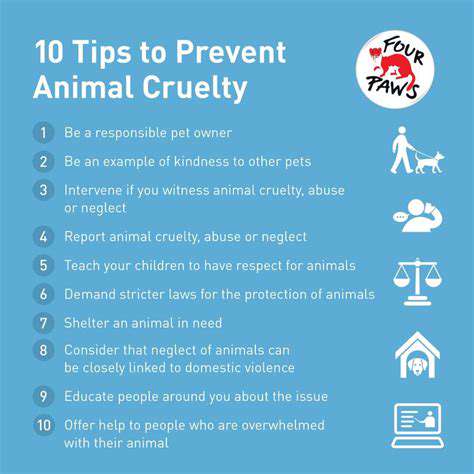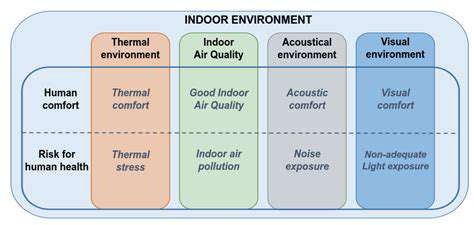How to Help Animals in Emergency Situations
Assessing the Situation
The first step in helping an animal in an emergency is to check the area and the animal's state. Look for dangers like traffic, rough ground, or other animals. Most importantly, stay safe before helping. A calm check is vital for handling the situation well and keeping both you and the animal safe.
See if the animal is awake and responding to you. Is it alert and aware of you? Or is it not responding or showing signs of distress? Watch for odd behaviors like shaking, trouble breathing, or strange sounds. This info helps you grasp how serious the situation is and what to do next.
Controlling Bleeding
If the animal is bleeding, press directly on the wound. Use a clean cloth or bandage to apply steady pressure. Raise the hurt limb if you can to slow blood flow. If the bleeding is heavy or doesn't stop after a few minutes, get vet help right away. Pressing on the wound is key to reducing blood loss and preventing more issues.
Make sure the bandage or material is clean and free of anything that could harm more. Doing this right can really help the animal's chances of survival.
Managing Shock
Shock is a serious condition that can happen after an injury or trauma. Signs include pale gums, fast breathing, weak pulse, and tiredness. If you think the animal is in shock, gently place it in a warm, safe, and comfy spot. Don't move it unless it's in danger. Keep the animal calm and avoid unnecessary handling. Get vet help immediately for any animal showing shock signs.
Treating Burns
If the animal has burns, cool the area right away with cool, running water. Don't use ice or other cold treatments. Avoid putting ointments or creams on the burn. Cover it with a clean, non-stick bandage and get vet help as soon as you can. Quick and proper burn care is key to reducing damage and helping healing.
Burn severity varies, and a vet can check how bad it is and suggest the best treatment. Following their advice is crucial for the animal's recovery.
Administering CPR (If Necessary)
CPR might be needed for cardiac arrest or severe breathing trouble. But doing CPR on an animal needs special training. If you're not trained, don't try CPR. Instead, focus on keeping the animal stable and get vet help fast.
Recognizing Signs of Distress
Animals often show small signs of distress that can mean a serious underlying issue. Watch for changes in breathing, sounds, posture, and overall behavior. Signs like hard breathing, odd sounds, shaking, or passing out can all point to serious problems needing quick vet care. Knowing and spotting these small signs is key for timely help and possibly saving the animal's life.
Knowing the animal's normal behavior is vital for seeing changes and acting fast.
Seeking Professional Help
In most animal emergencies, getting vet help is crucial. Vets are trained to handle many emergencies and give the best care to hurt or distressed animals. Waiting can harm the animal's health. Take the animal to the nearest vet clinic or emergency hospital as fast and safely as you can.
Don't wait to call local animal control or emergency services if you need help moving the animal or aren't sure what to do. Their skills can be very helpful in getting the right care for the animal.
Seeking Veterinary Care: When to Call for Help
Recognizing Signs of Distress
Animals can't tell us when they're in pain or discomfort. It's important to watch for small, and sometimes big, signs that something's wrong. These can be behavior changes, like tiredness or aggression, or physical signs like vomiting, diarrhea, or trouble breathing. Knowing what's normal for your pet helps spot changes that might need quick vet care. Watch for any odd changes, no matter how small. Early help is often key to successful treatment.
A sudden lack of appetite, not wanting to move or play, or changes in sounds can all be early signs of illness or injury. Changes in bathroom habits, like how often or what it looks like, or blood in waste, should also prompt a vet call. If you see swelling, odd colors, or strange discharge from any part of your pet's body, get vet help right away.
Assessing the Severity of the Situation
Once you see possible problems, check how serious they are. Is your pet slightly uncomfortable or clearly in distress? Did the issue start suddenly or build over time? These details help decide how urgent it is. For example, a dog that suddenly falls needs vet help much faster than one that's been a bit tired for a day.
Look at the specific symptoms. Heavy bleeding, trouble breathing, or seizures are clear signs of a critical need for vet help. Knowing the animal's history, including past health issues or recent diet changes, can also help judge how serious it is. Watching and writing down symptoms helps the vet give the best care.
Determining the Appropriate Veterinary Care
Not all vet needs are emergencies. A lasting cough, slight limp, or change in eating might just need a regular vet visit. But if your pet has severe symptoms, like trouble breathing, seizures, or heavy bleeding, an emergency visit is a must. Knowing your pet's normal behaviors and spotting worrying changes helps make the right call for the best outcome.
Think about location and vet availability when deciding. For critical emergencies, go to the nearest emergency clinic first. Knowing the types of vet care helps pick the best option for your pet's needs. Call your vet or emergency clinic for advice if you're unsure.
Understanding Emergency Procedures
Knowing what to do in an emergency can really help your pet. Before an emergency, learn the emergency contacts for your vet and local emergency clinics. Keep this info easy to reach. Gather any medical records or health history that might help the vet.
Learn how to move your pet safely in an emergency. If possible, avoid rough handling or stress during the trip. If your pet shows shock or trauma signs, keep it calm and steady while moving. Always make sure the way you move your pet is safe and secure, and be ready to tell the vet staff about the symptoms and when they started.
One of the most common TMJ disorder symptoms is jaw joint pain. This pain can be mild to severe, often spreading to nearby areas like the neck, shoulders, and even ears. Many mistake this pain for a headache or earache, making it hard to diagnose.

Read more about How to Help Animals in Emergency Situations
Hot Recommendations
- Review: [Specific Brand] Small Animal Cage
- Why Rescuing Pets Saves Lives
- Best Pet First Aid Kits [What to Include]
- How to Help Stray Animals in Your Community
- Guide to Adopting a Pet When You Have Kids
- Top Reptile Heat Lamps
- Heartwarming Rescue Stories That Will Inspire You
- Review: [Specific Brand] Bird Cage
- Best Aquarium Filters [2025 Review]
- Review: [Specific Brand] Smart Litter Box


![Review: [Specific Brand] Reptile Food](/static/images/33/2025-05/EaseofUseandFeedingExperience.jpg)








![Review: [Specific Brand] Dental Chews for Dogs](/static/images/33/2025-06/ValueforMoneyandAlternativeOptions.jpg)